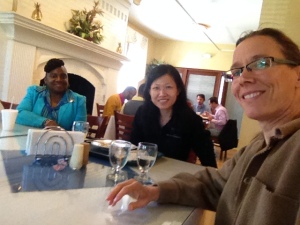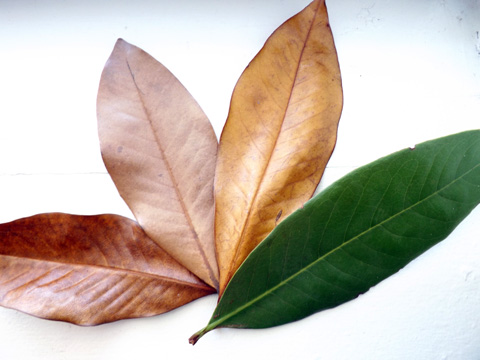Every Tuesday, I hike across campus to the Holly Tree Inn, Hampton University’s faculty restaurant, to share lunch with any professor who wants to share ideas over lunch. At the start of the school year, I issued a very informal invitation to all faculty during the sustainability sessions my colleagues and I delivered to our colleagues at HU. As a result, most of the Tuesday conversations focus on environmental sustainability.

Dr. Ralph Charlton and I graduated together from William and Mary’s School of Education with PhD’s in Educational Policy, Planning and Leadership.
I’ve always enjoyed sharing ideas at the Holley Tree. My first experiences were as a part-time professor and I enjoyed them so much that I decided to join the HU faculty full-time. After the studio class I co-taught in 1999-2000, I’d walk over to the Holly Tree with the rest of the department faculty and we’d reflect on events and goals of the department. Unfortunately, we haven’t been doing much of this lately (it has to be really enjoyable to get people to take time out of their busy schedules… and the cost of buying lunch has increased over the years).
Nevertheless, I was inspired by the vast amount of learning that I observed (and was part of) in the staff canteens at DIT last year. So I made the effort to replicate DIT’s model–which I saw as a way to create new knowledge and integrate learning across the campus.
So far this year, I’ve enjoyed sharing ideas with 2-4 people at each Tuesday’s lunch. I’ve learned a tremendous amount in these conversations.
Last week, I dined with one HU professor, one HU administrative assistant, and a visiting professor from Singapore. Our conversation focused on cultural similarities and differences and the opportunities that international exchange offers.
We didn’t stick exclusively to sustainability in our discussion this week, although we usually do. Much of our conversation focused on cultural expectation and higher education policy. In this realm, I learned that Singapore makes a big investment in reaching out the rest of the world. It provides funding for its faculty members to travel internationally to learn new things and connect to scholars elsewhere. (A few years back, I met a pre-K school leader from Singapore who had received funding to travel through the US for several weeks, on a similar program also funded by the national government in Singapore).
The folks I ate with last Tuesday were experts in sports management and in teaching college students about that topic.
Incidentally, the Holly Tree is a bit of an icon. Rosa Parks worked here for a brief time–not so very long ago.
















































